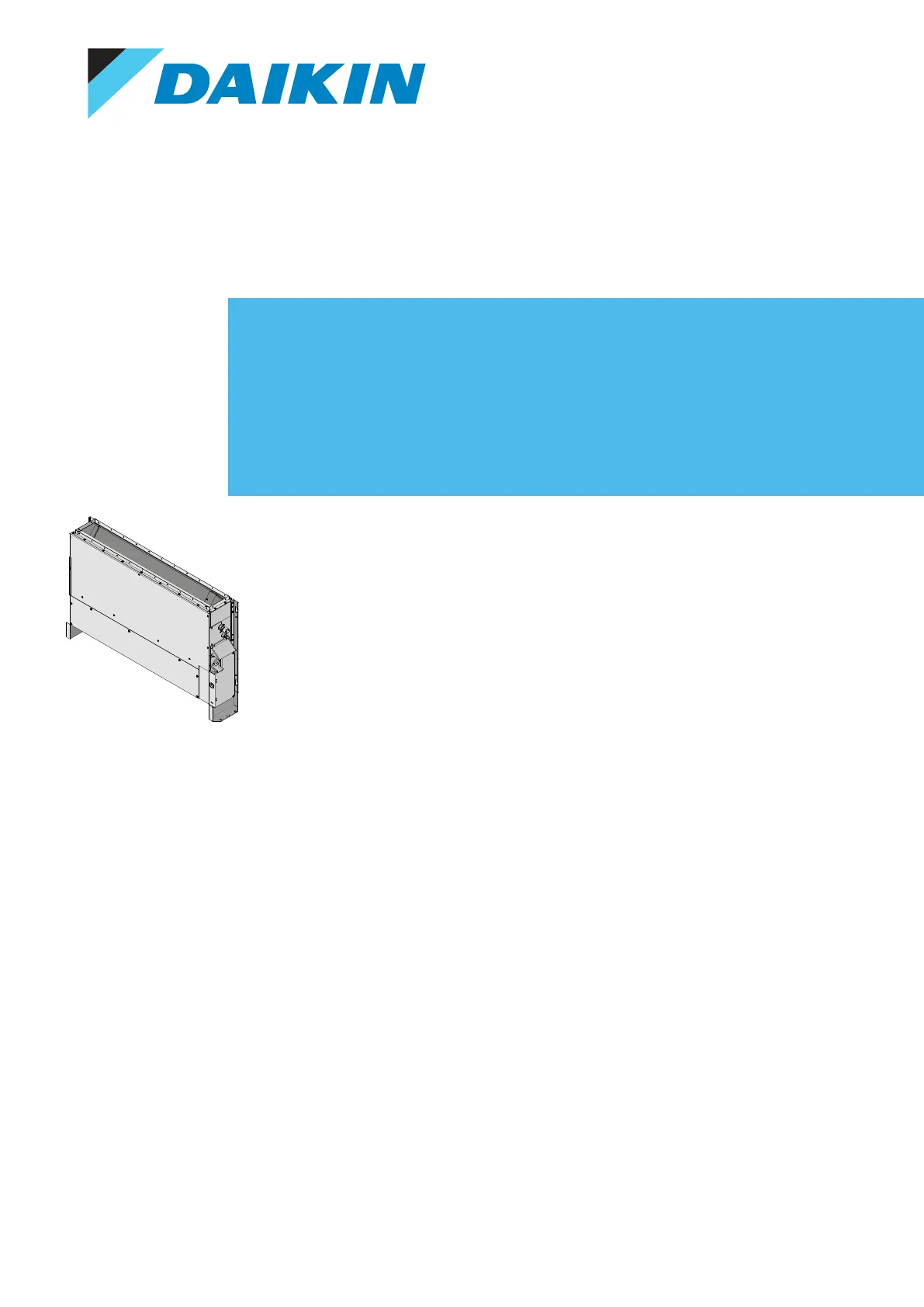Daikin FXNA40A2VEB Käyttöohje
Daikin
Ei luokiteltu
FXNA40A2VEB
Lue alta 📖 käyttöohje suomeksi merkille Daikin FXNA40A2VEB (38 sivua) kategoriassa Ei luokiteltu. Tämä opas oli hyödyllinen 37 henkilölle ja sai 4.3 tähden keskimäärin 19 käyttäjältä
Sivu 1/38

Installer and user reference guide
VRV system air conditioner
FXNA20A2VEB
FXNA25A2VEB
FXNA32A2VEB
FXNA40A2VEB
FXNA50A2VEB
FXNA63A2VEB
Tuotetiedot
| Merkki: | Daikin |
| Kategoria: | Ei luokiteltu |
| Malli: | FXNA40A2VEB |
Tarvitsetko apua?
Jos tarvitset apua merkille Daikin FXNA40A2VEB esitä kysymys alla ja muut käyttäjät vastaavat sinulle
Ei luokiteltu Daikin Käyttöohjeet

9 Huhtikuuta 2025

9 Huhtikuuta 2025

9 Huhtikuuta 2025

9 Huhtikuuta 2025

9 Huhtikuuta 2025

9 Huhtikuuta 2025

9 Huhtikuuta 2025

11 Helmikuuta 2025

11 Helmikuuta 2025

10 Helmikuuta 2025
Ei luokiteltu Käyttöohjeet
- Ei luokiteltu Enermax
- Ei luokiteltu Cybex
- Ei luokiteltu Exagerate
- Ei luokiteltu Smart-AVI
- Ei luokiteltu Aqua-Vu
- Ei luokiteltu Lucide
- Ei luokiteltu Petkit
- Ei luokiteltu Babysense
- Ei luokiteltu Swissvoice
- Ei luokiteltu Aqua Joe
- Ei luokiteltu Unitech
- Ei luokiteltu Kospel
- Ei luokiteltu Generac
- Ei luokiteltu Eminent
- Ei luokiteltu PreSonus
Viimeisimmät Ei luokiteltu Käyttöohjeet

9 Huhtikuuta 2025

9 Huhtikuuta 2025

9 Huhtikuuta 2025

9 Huhtikuuta 2025

9 Huhtikuuta 2025

9 Huhtikuuta 2025

9 Huhtikuuta 2025

9 Huhtikuuta 2025

9 Huhtikuuta 2025

9 Huhtikuuta 2025